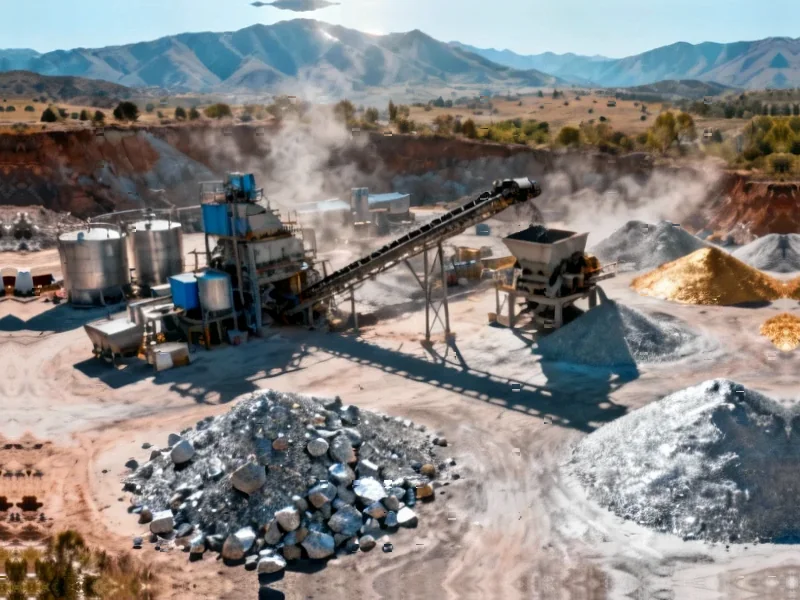According to CNBC, the global critical minerals race has triggered a dramatic rally in U.S.-listed rare earth mining stocks, with shares of Critical Metals advancing 241% over the last three months despite recent pullbacks. Other major players including NioCorp Developments, Energy Fuels and Idaho Strategic Resources have all surged well above 100% over the same period, with Energy Fuels’ stock price quadrupling through the first 10 months of 2024 and NioCorp Developments’ shares nearly quintupling. Tony Sage, CEO of Critical Metals, which controls one of the world’s largest rare earth deposits in southern Greenland, described this as the fourth major market boom following historical gold, oil, and technology cycles. The surge coincides with rare earths becoming a key bargaining chip in the geopolitical rivalry between the U.S. and China, positioning these minerals as essential for future energy and technology infrastructure.
The Supply Chain Realignment Strategy
What we’re witnessing isn’t merely a commodities boom—it’s a fundamental restructuring of global supply chains that has been decades in the making. For years, China maintained near-monopoly control over rare earth processing, controlling approximately 80% of global refined output despite holding only about one-third of known reserves. This concentration created strategic vulnerabilities that became painfully apparent during trade tensions and pandemic-era disruptions. The current stock surge represents market recognition that Western nations are finally making serious investments to build independent supply chains, with the U.S. Department of Energy and Department of Defense both prioritizing domestic critical minerals production through various initiatives and funding programs.
The Rare Earth Business Model Evolution
Unlike traditional mining operations focused on volume, successful rare earth companies are building vertically integrated business models that span extraction, separation, and manufacturing. The real value creation occurs not in pulling rocks from the ground but in mastering the complex chemical separation processes that transform raw ore into usable materials. Companies like MP Materials have demonstrated this strategy by moving beyond mining to establish processing capabilities that capture more of the value chain. This approach mirrors the integrated models seen in other strategic industries where control over the entire production process provides competitive advantages and higher margins.
Why This Boom Is Happening Now
Three converging factors explain the timing of this explosive growth. First, the acceleration of green energy transitions has dramatically increased demand projections for rare earths used in electric vehicle motors, wind turbines, and energy storage systems. Second, escalating U.S.-China tensions have moved critical minerals from economic concern to national security priority, triggering policy support and investment. Third, technological advancements in extraction and processing have made previously uneconomic deposits commercially viable. The combination creates a perfect storm where demand, policy, and technology align to create unprecedented market conditions.
The Reality Check: Volatility and Execution Risk
While the growth numbers are staggering, investors should recognize the substantial risks inherent in this sector. Rare earth mining faces significant environmental challenges, with processing generating toxic waste that requires sophisticated management. The capital intensity of building separation facilities creates execution risk, and many projects face years of development before generating meaningful revenue. Additionally, the sector remains vulnerable to commodity price swings and potential technological disruptions, such as alternative materials that could reduce dependence on specific rare earth elements. The U.S. Geological Survey regularly documents these challenges in their critical minerals assessments, highlighting the gap between resource potential and commercial production.
Long-Term Strategic Implications
This rare earth boom represents more than a financial opportunity—it signals a broader reordering of global industrial competition. Nations are recognizing that control over critical minerals translates into influence over future technologies, from defense systems to renewable energy infrastructure. The companies positioned to succeed will be those that can navigate complex regulatory environments, build resilient supply chains, and maintain social license to operate in sensitive regions. As the energy transition accelerates, rare earth producers will increasingly function as strategic partners to governments and technology companies rather than traditional commodity suppliers, creating new business models and valuation metrics for the industry.




